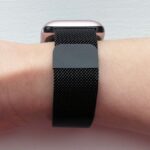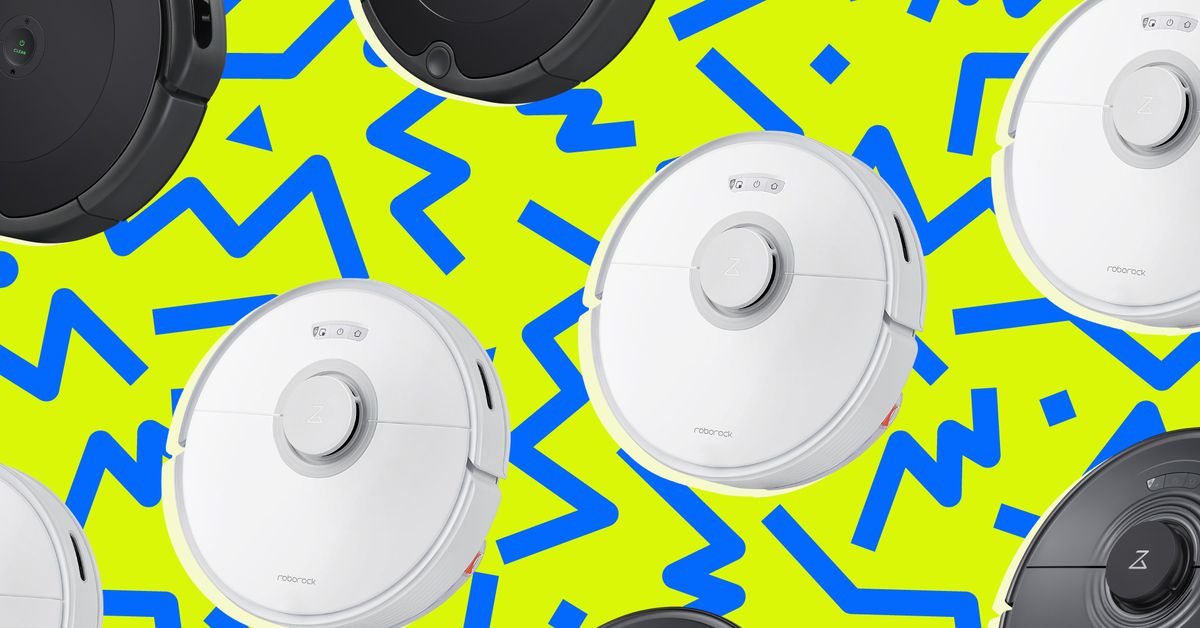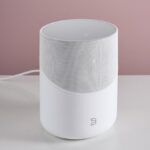Writer’s note: Amazon’s fall Prime Day event will kick off on October 8th and run through the 9th, but we’re already starting to see some good deals trickle in. We’ve rounded up the best early Prime Day deals here, and will add any robovac deals we see as they roll in.
Today’s robot vacuums are becoming a bit like cars: with all the features, upgrades, and fancy trimmings available these days, it’s easy to forget that they can just be simple machines that get us from point A to point B. Yes, some bots blow hot air on their bums (mop pads) and deftly navigate dog poop, but there are plenty of basic budget robot vacuums that just do a decent job of cleaning your floor autonomously — as long as you tidy up first.
While higher-priced, higher-powered robot vacuums clean better, budget bots do a perfectly good job, especially if you run them regularly. The biggest downside of cheaper models is they get stuck on cables, socks, shoelaces, and other paraphernalia you leave lying around. If you’re home and can untangle it, great, but if you’re not, then it will just sit there stuck until its battery dies, and you have to charge it up again before it will clean your floors.
Fancier models have obstacle recognition, and some even use AI-powered cameras to tell popcorn from poop and avoid the latter. If you want one of those, check out my Best Robot Vacuum buying guide. But if you think you can manage the task of picking up after yourself (and your puppy), a budget bot will save you a lot of money and still do a good job cleaning your floor.
Here’s a list of my favorite robot vacuums that don’t cost a fortune and will still get the job done.
Best budget robot vacuum
This robot vacuum has superior cleaning power over the competition thanks to its wide, dual rubber brushes that get up more dirt and debris. While it can map, there are no keep-out zones.
The Roomba i4 Evo robot vacuum (the Roomba i3 by another name and with a bigger battery) cleans just as well as the flagship Roomba j7 and can map your house for more accurate vacuuming. But there’s no AI-powered obstacle avoidance or virtual keep-out zones, so you do have to clean up your clutter before you run it.
Suction power: unknown / Dustbin capacity: 419ml / Runtime: 90 minutes / Brush style: dual rubber / Auto-empty dock option: yes / Mopping option: no / Mapping: yes / Keep-out zones: physical only / Works with: Amazon Alexa, Google Home, Siri Shortcuts
The Roomba i3 Evo isn’t the cheapest robot on the block, but its cleaning chops, attractive design, superb software, and robust, easily-repairable hardware make it the best choice for spending a smaller budget.
The i3 cleans almost as well as iRobot’s higher-end j7 but for a lot less. While it has slightly lower suction power, it has Roomba’s signature dual roller rubber brushes, which do an excellent job of removing pet hair from hardwood floors and sucking up oatmeal from plush carpets. It doesn’t have the AI-powered obstacle avoidance of the j7 (which knows the difference between poop and popcorn), but that’s not a feature you’ll find on any budget bot.
What the i3 does have is mapping and room-specific cleaning, so you can send it to clean the kitchen if you want. Only a handful of the budget bot features mapping, and Roomba’s maps are some of the best in my experience, mainly because they rarely have to be rebuilt.
The biggest negative here is there are no virtual keep-out zones. If you have somewhere you don’t want the bot to roam, you’ll need to buy one of iRobot’s virtual wall towers. It also has a relatively small bin, but you can pair it with an auto-empty base (although that increases the cost substantially).
The i3 is a solid vacuum with big wheels that can easily tackle any floor surface you throw at it, managing most transitions. But it does tend to bump into things, resulting in a few toppled chairs during testing. This means it gets almost everywhere you want it to and won’t be put off by a bed skirt. But if you have delicate items on rickety tables, watch out.
As with all Roombas, the i3 is easy to self-repair, and you can buy (not inexpensive) replacements for all its parts. I’ve actually rebuilt one after it rolled over some dog poop. It’s worth noting that the Roomba i4 is essentially the same robot vacuum as the i3 Evo, so pick up whichever offers the best price.
As of last year, iRobot also offers the Combo i5 for $349.99, which adds the option of basic mopping and a smaller auto-empty dock if you go with the i5 Combo i5 Plus version. I’m currently testing this model, but it has largely the same features as the i3 and is a good option if you can’t find the i3 in stock.
More expensive but with a bigger bin
The Q5 Pro has a big 770ml bin, 5,500Pa of suction power, and can be paired with an auto-empty dock, making it a great budget option when it’s on sale. It also mops with a removable mopping pad with a small built-in water tank. It has dual rubber brushes, lidar mapping, and keep-out zones, and the app is very good.
Best basic bump-and-roll bot
A truly basic budget bot, the Shark has good suction power and a big bin and will just go for it. It’s easy to buy replacement parts, too, making this one that can go for years.
Suction power: unknown / Dustbin capacity: 425ml / Runtime: 120 mins / Brush style: single bristle / rubber hybrid / Auto-empty dock option: no / Mapping: no / Keep-out zones: no / Works with: Amazon Alexa, Google Home
The Shark Ion’s big bin, simple app experience, decent battery life, repairability, and bullish nature make this an excellent bump-and-roll bot. That is a robot that doesn’t map or have any special navigation features other than colliding with things and changing direction. It’s not fancy, but it gets the job done.
It’s a good one to stick under a bed or desk and set to run when you’re not home, as it’s loud and rattly and will bang into everything in its path. But its big wheels and 120-minute runtime mean it’s less prone to getting stuck or running out of juice than simpler $100 bots.
Unlike many budget bots, it uses a hybrid roller brush that’s both bristle and plastic and doesn’t get as tangled as standard bristle brushes. Its short, squat side brushes are surprisingly effective at getting debris into the robot’s path, and because they’re short, they’re less prone to getting tangled in stray cords.
But the best thing ‘bout this bot is its tank-like wheels that will roll right over anything in its path, including high transitions between rooms, obstacles like lounger chair legs, and other furniture traps that regularly stump other bots. That’s a good thing, as there’s no mapping, obstacle detection, or any way to set keep-out zones here. This bot just goes.
Another bonus: replacement parts are easily available, making this more repairable than most non-Roombas.
Shark doesn’t share suction power specs, but it ably handled all my tests, including the toughest: raw oatmeal. Those little flakes are hard to pick up; side brushes will spin them all over the floor. It did a good job on pet hair, too, although, like most robots I tested, it required at least two runs to get everything up effectively.
The app is super basic: just on / off, basic scheduling, and a choice of three power levels (all loud). Disappointingly, you can only schedule it once a day. Most robots can be programmed to do two to three passes, but in place of that, I like the option to schedule it to go out twice to make sure it gets the job done. I couldn’t do that with the Shark. Still, you can press its button or use the app to send it out again if needed.
Best budget robot vacuum and mop
The D10 Plus is a feature-packed midrange all-rounder and one of the least expensive bots that includes an auto-empty dock, mopping, and mapping. It’s an effective vacuum, but it’s prone to getting stuck. Thankfully, you can set keep-out zones to help with this.
Suction power: 4,000Pa / Dustbin capacity: 400ml / Runtime: 180 mins / Brush style: single bristle / rubber hybrid / Auto-empty dock option: yes / Mapping: yes, plus lidar navigation / Keep-out zones: yes, virtual / Works with: Amazon Alexa, Google Home
The midrange Dreametech D10 Plus is one of the few bots you’ll find that mops, maps, and auto-empties for $400 or less. I like its more compact auto-empty station, which helps compensate for its small 400ml bin.
Decent suction and a rubber / bristle hybrid brush provide a good clean, but it’s nowhere near as effective as the Roomba i3 Evo with its dual rubber rollers.
The big selling point here is that the Dreame does have lidar navigation and mapping to allow for room-specific cleaning with keep-out zones. Keep-out zones are handy for ensuring the robot finishes the job; if it gets stuck somewhere regularly, you can tell it to avoid that spot.
The Dreame has no-mopping zones in the app, and you can also remove the mop before you send it out. The Dreame did a good job navigating my complicated second floor, and while it’s quite a burly bot, it still fit under most furniture and handled transitions well.
A better mopper but more work
The Shark Matrix Plus 2-in-1 Robot Vacuum and Mop mops very well — doing a swingy, scrubbing movement with its rear end when in “Matrix mode.” However, you have to manually fill and attach the mop reservoir and empty the bin when it mops, as it only self-empties in vacuum mode and can only avoid larger objects.
Best self-cleaning, self-emptying robot vacuum / mop under $500
One of the first robots that can vacuum, mop, self-empty, self-wash, and self-dry with hot air for under $1,000, the Yeedi Cube retails for $699.99 but is regularly on sale for far less. It’s a good vacuum and mop for hands-free cleaning on a budget.
Suction power: 5,100Pa / Dustbin capacity: 360ml / Runtime: 180 mins / Brush style: single bristle / rubber hybrid / Auto-empty dock option: yes / Mapping: yes, plus lidar navigation / Keep-out zones: yes, virtual / Works with: Amazon Alexa, Google Home
The Yeedi Cube is the least expensive robot vacuum that has the same kind of multifunction dock and high-end features as robots over $1,000. It also has obstacle avoidance tech, although, unlike the pricier bots, it uses lasers to see objects, not an AI-powered camera. This is less effective but more avoidance than any other bot in this roundup offers. While it originally retailed for $699.99, it can often be found on sale for less than $500.
The Yeedi resembles the Roomba in its full-speed-ahead nature. It will just run into things, and if it can clean them, great! It also only goes around larger objects. So while it ably sucked up Cheerios and picked up all the oatmeal flakes, it got stuck on cords and socks. Definitely keep it away from pet waste.
The Yeedi’s mopping prowess is impressive. It scrubs the floor using a thin microfiber cloth that vibrates 2,500 times a minute to get up grime, similar to the Roborock S8. The dock cleans the mopping pad, drains the dirty water, and auto empties the bin, but the robot carries its one-liter water tank around on its back, so it doesn’t need to go back and refill during a run.
One downside is it uses a single hybrid rubber / bristle brush, which got tangled with hair. However, combined with 5,100Pa of suction power, it did a good job of picking up dirt from the floors.
I really liked the handle that makes it easy to pick up the vacuum and put it where you want to clean. An onboard spot clean button means you don’t need to fuss with the app to get it to clean up a dedicated area. The map offers room-specific cleaning and keep-out zones for vacuuming and mopping.
Update, October 4th: Adjusted pricing, re-added the Shark Matrix Plus 2-in-1, and included a note about Amazon’s forthcoming Prime Day event.
Read the full article here














